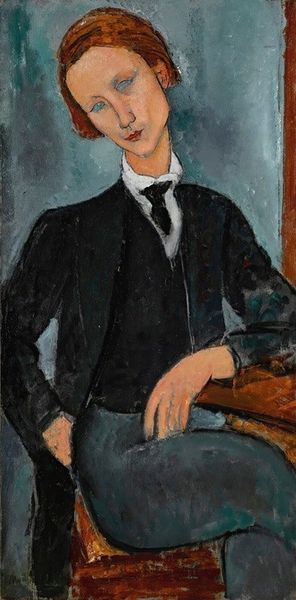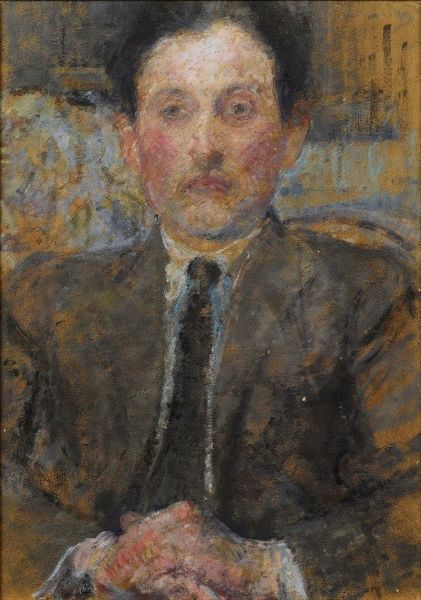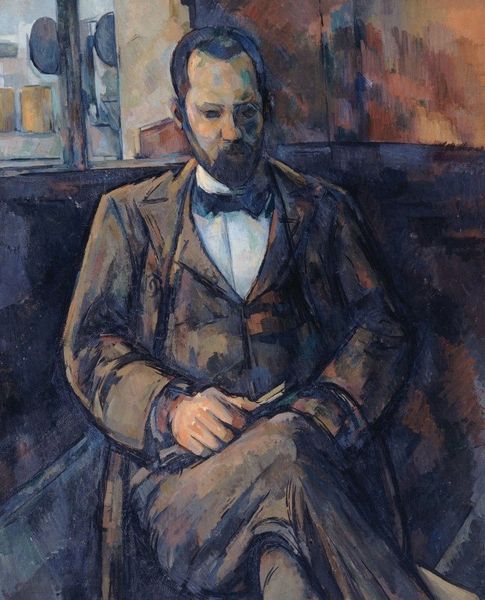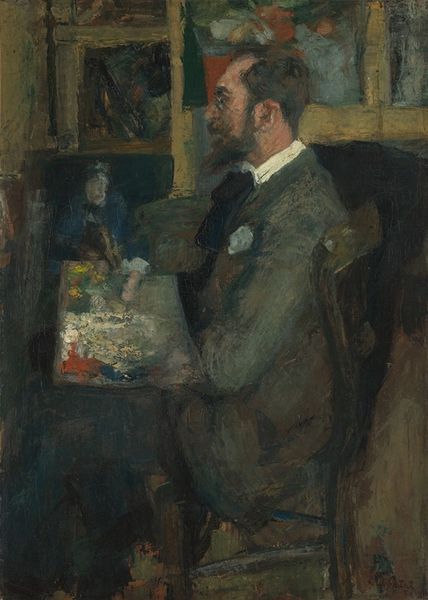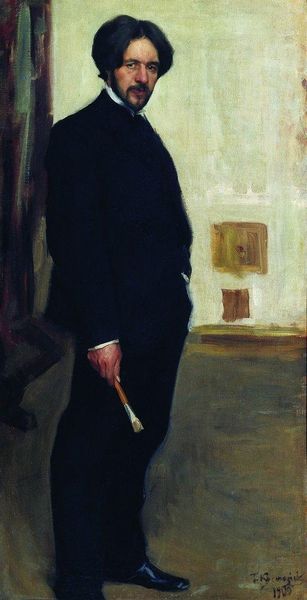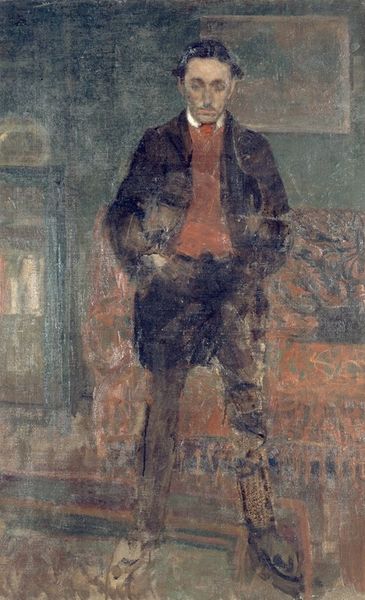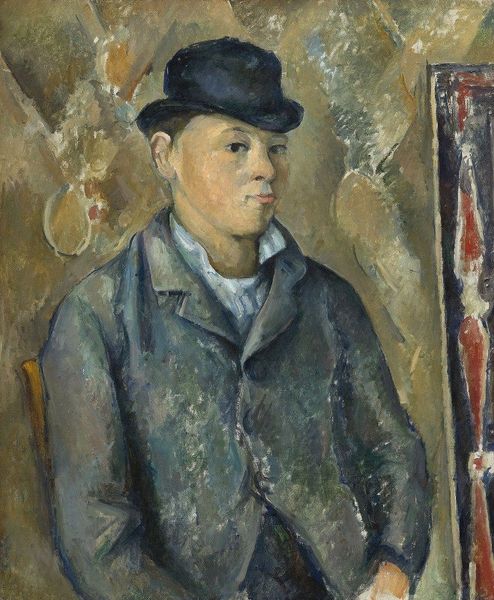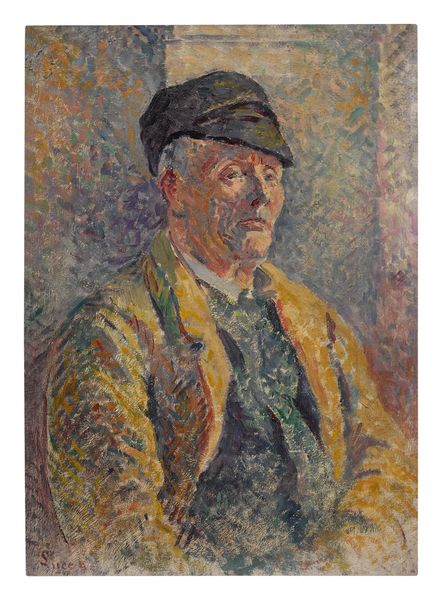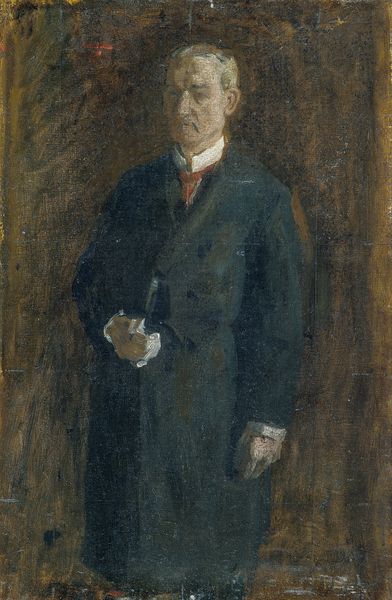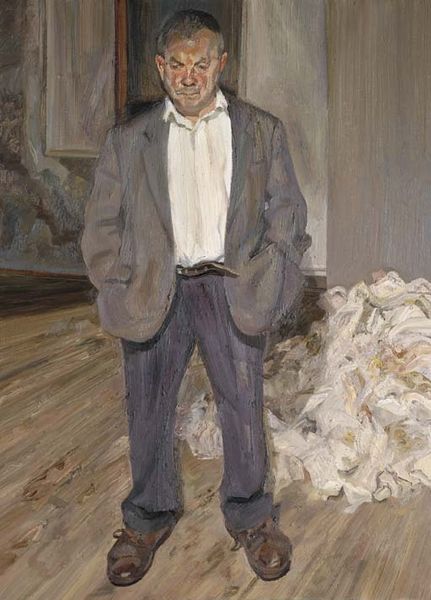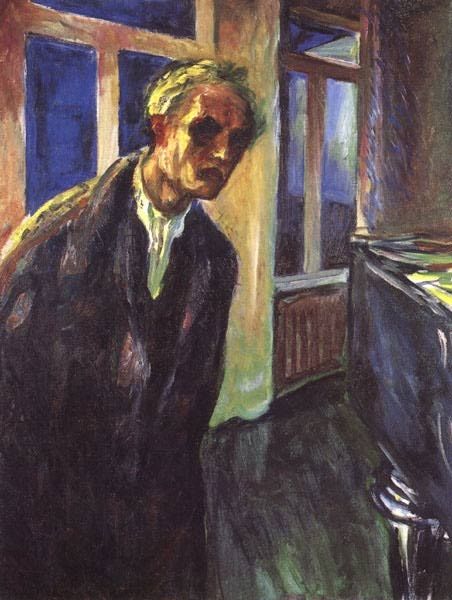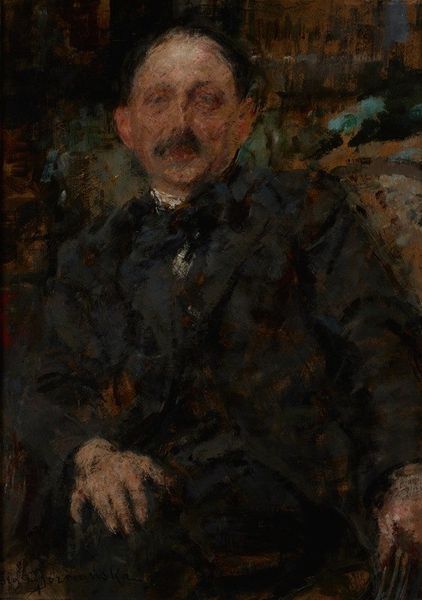
Dimensions: 59.7 x 37 cm
Copyright: Public domain
Curator: Welcome. Before us, we see Theo van Rysselberghe’s "Roger Martin du Gard," an oil painting dating from 1926. It’s currently held in a private collection. Editor: The initial feeling is rather muted, wouldn't you say? The gray tones dominate, and there's a kind of hesitant, almost blurry quality. He appears respectable, firmly part of the establishment. The subdued tones almost feel like an indictment. Curator: Rysselberghe, although associated with Neo-Impressionism earlier in his career, embraces a more loosely handled approach here, wouldn’t you agree? Notice the textured brushstrokes that give the whole canvas a sense of vibrancy. He depicts the French novelist, Roger Martin du Gard, projecting the quiet intensity that many associate with the author’s literary works. Editor: Yes, and I see a clear statement about the cultural elite. Martin du Gard, a celebrated writer, is presented as an important pillar of French society. What's interesting is that his serious expression offers some degree of skepticism, mirroring intellectual tensions of the era. I mean, doesn't it make you wonder what Rysselberghe sought to capture? Curator: Well, portraits during this period served a function; they reflected the sitter's social standing and achievements. As an artist deeply engaged in portraying intellectuals and cultural figures, Rysselberghe provides us a glimpse into Martin du Gard’s world through his distinct, modern lens. Editor: Beyond the immediate social representation, the muted colors speak to the atmosphere of the time. Post-World War I, there was certainly a sense of exhaustion and weariness in intellectual circles as they grappled with existential questions and re-evaluating societal norms. This portrait acts as a powerful reminder of the intellectual class grappling with complex and shifting values during that era. Curator: Absolutely, it’s a fascinating study in how an artist translates intellectual presence into a visual experience, encapsulating an individual, an era, and perhaps even questioning the very structures they represent. Editor: It’s certainly one of those pieces that invites repeated viewings. Each time, there are always different nuances that speak to both the subject and the context in which it was created.
Comments
No comments
Be the first to comment and join the conversation on the ultimate creative platform.
